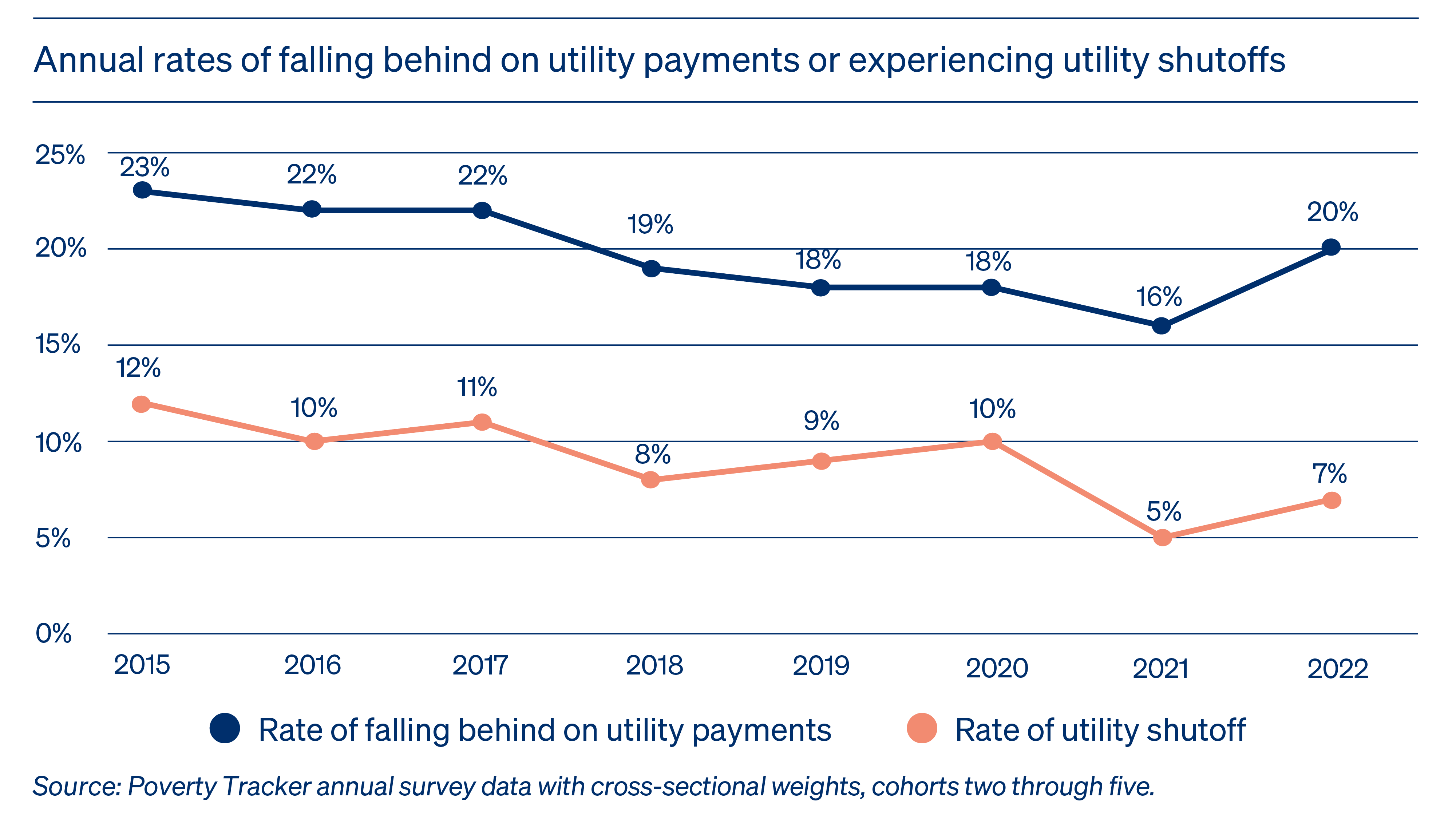July 2024
The Prevalence and Persistence of Energy Insecurity in NYC
Rising utility costs and increasing temperatures contribute to a common phenomenon among New Yorkers in poverty: energy insecurity
Contributors: Nicholos Wilkinson, Diana Hernández, Daniel Salgado, Sophie Collyer, Christopher Wimer,
Issues Areas: Energy, Financial Security
This Poverty Tracker report charts the prevalence and persistence of energy insecurity (defined as the inability to meet basic household energy needs) in the nation’s largest city: New York. We harness this novel dataset to determine the overall state of energy insecurity in the city, which New Yorkers are most at risk of persistent energy insecurity, and how it overlaps with other forms of hardship.
Across the nation and in New York, the cost of household energy has increased in recent decades due to rising utility rates and greater reliance on energy to carry out daily functions involving cooling, heating, lighting, refrigeration, and the use of electronic devices. At the same time, the effects of climate change are felt especially hard in our nation’s coastal cities, of which New York is one.
Families depend on these basic energy necessities to maintain healthy and safe households, and when they cannot afford their energy bills, they may: 1) reduce or forgo basic necessities (such as food, childcare expenses, etc.) to pay their bills or 2) miss their payments entirely and eventually experience a shutoff.
Our analysis found that in a typical year, more than 700,000 New Yorkers live in a household where utilities have been shut off at least once. Looking across five years, more than 1.5 million New Yorkers have lived in a household where their utilities have been shut off at least once.
Explore key takeaways below:
1.5
M
New Yorkers have lived in a household where their utilities have been shut off at least once over the 5-year period of this study.
62
%
of New Yorkers who live below the poverty line have fallen behind on their utilities payments.
43
%
of New Yorkers who live below the poverty line have had utilities shut off entirely between 2015 — 2022.
37
%
of Black New Yorkers experienced a utility shutoff, compared to just 5% of white New Yorkers. Overall, renters, Black and Latinx New Yorkers, and Bronx residents shoulder the greatest economic burden to power and cool their homes.

Poverty Tracker data reveals that energy insecurity is a barometer for other forms of hardship. Across the five-year period, the vast majority of New Yorkers who fell behind on utility payments or who had a utility shut off experienced at least one other form of hardship (89% and 96%, respectively) such as running out of money before their next paycheck, not paying their full amount in rent, and worrying about paying for their next meal – making it part of a trifecta of hardship, alongside the costs of food and housing.
Robin Hood-supported solutions that stem the financial strain of rising energy costs can help reduce the hardships those costs place on New Yorkers, such as:
- Expanding access to programs that directly reduce electricity costs;
- Expanding disconnection protections and reducing added fees and deposit requirements;
- Improving building performance and energy efficiency;
- Boosting New Yorkers’ income by making the temporary 2021 Child Tax Credit (CTC) permanent and expanding its eligibility.